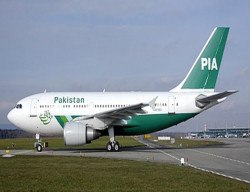
One such example is the Chinese multinational Midea Commercial Air Conditioner (CAC), which has announced it will be distributing three new “green, energy-efficient” solutions for the Pakistani Heating, Ventilation and Air-conditioning (HVAC) industry.
The products, which fall under Midea’s MDV brand, include a solar-powered air-conditioner, a DC Inverter Variable Refrigerant Flow (VRF) system and a “Dual Storage Full Falling-Film Centrifugal Chiller.”
At a seminar in Islamabad on Wednesday, representatives of the Midea Group and its distributing partner in Pakistan, said the first shipment of the products is expected in Pakistan in mid-November.
“I think there is a growing demand for air-conditioners in Pakistan but at the same time there is a shortage of fuel and electricity,” said Dennis Lee, director Africa and South Asia of Midea CAC’s Global Sales. “So the Pakistani industry stands to benefit from energy-saving products.”
Assistant General Manager of Business Development at EES, Adnan Hamid, said energy has become a concern not just for Pakistan but also for the countries around the world. Hamid said there is a need to look toward alternative energy sources and environment-friendly solutions.
Beck Zhao, a Midea CAC representative, claimed MDV’s solar air-conditioner, when coupled with a two-panel DC inverter, could give energy savings of up to 78%. He added that the coefficient of performance for the company’s new chiller design is 7.06, which he said was higher than the efficiency of competitive designs.
Fahad Hasan, an engineer working with YH Associates, said 60% of electricity utilised in a building is used by HVAC systems. He said the need for energy-efficient industrial solutions is not only necessitated by the need for sustainability but also by scarcity of energy resources. Hasan said energy-efficient building design is “a wise investment,” not a “cost.”
Published in The Express Tribune, October 3rd, 2013.
Like Business on Facebook, follow @TribuneBiz on Twitter to stay informed and join in the conversation.























COMMENTS
Comments are moderated and generally will be posted if they are on-topic and not abusive.
For more information, please see our Comments FAQ